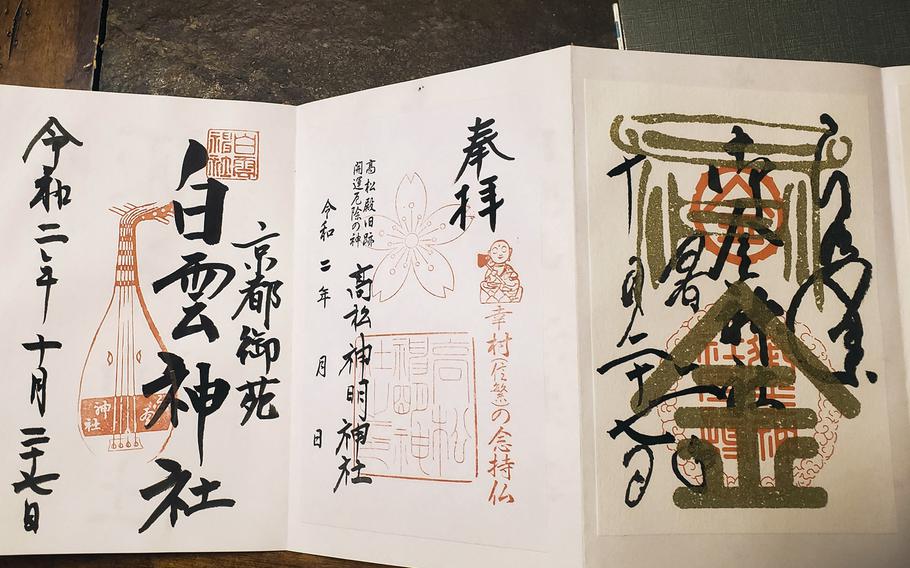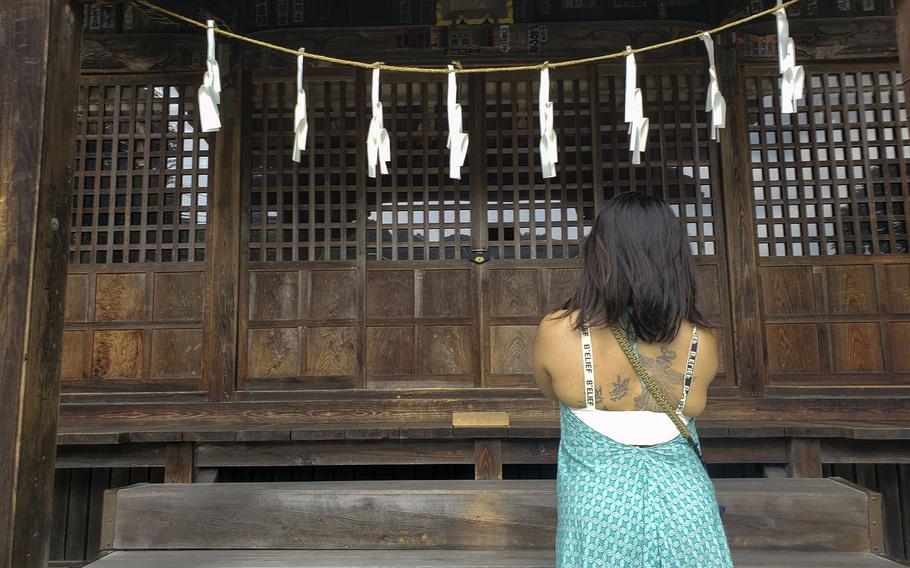
Goshuin are kanji symbols handwritten or hand-stamped by monks, passport like, as proof that you visited a specific shrine or temple in Japan. (Theron Godbold/Stars and Stripes)
Living and traveling in Japan, you are bound to come across one of the thousands of temples and shrines that dot the cities and countryside alike.
Whether a Shinto shrine or a Buddhist temple, most have one thing in common in that they provide goshuin.
Goshuin, which translates to “red stamp,” are unique, kanji symbols handwritten or hand-stamped by monks, passport like, as proof that you visited a specific shrine or temple.
My first experience collecting goshuin was at Shiroishi Castle in Miyagi prefecture, where a small Shinto shrine is located. After touring the grounds, I was offered a goshuin for about $3 by the older man who ran the castle.
The unique kanji and design of the paper stamp intrigued me, and I have been on the lookout for these neat little mementos ever since.
The stamps are collected by visitors and worshipers alike, but stamp collecting for its own sake wasn’t the original purpose.
The most popular explanation holds that goshuin were used as proof that a person had copied a sutra, a canonical scripture in Buddhism.
Once attained, the goshuin are placed in a goshuincho, or book of seals, which in the past was used as a sort of passport to the next life that showed your faith or devotion.
This practice is still being done throughout Japan today, but less for religious reasons than for collecting the stamps on their own merit.
Goshuincho books can normally be purchased at the larger shrines or temples, or from online retailers. They average in price from $15 to $20 on site, or less than $10 online. The average cost for the actual stamps is normally about $3 at smaller shrines and temples and about $5 at the larger, more popular ones.
Proper etiquette at shrines and temples dictates that visitors make an offering in the donation box along with purchasing a stamp and remembering the site is one for making a religious observance.

Proper etiquette at shrines and temples dictates that visitors make an offering in the donation box along with purchasing a stamp and remembering the site is one for making a religious observance. (Theron Godbold/Stars and Stripes)
Since COVID-19 restrictions have been instituted throughout Japan, many of the smaller shrines are keeping the stamps next to the donation boxes where the stamp payment is on the honor system.